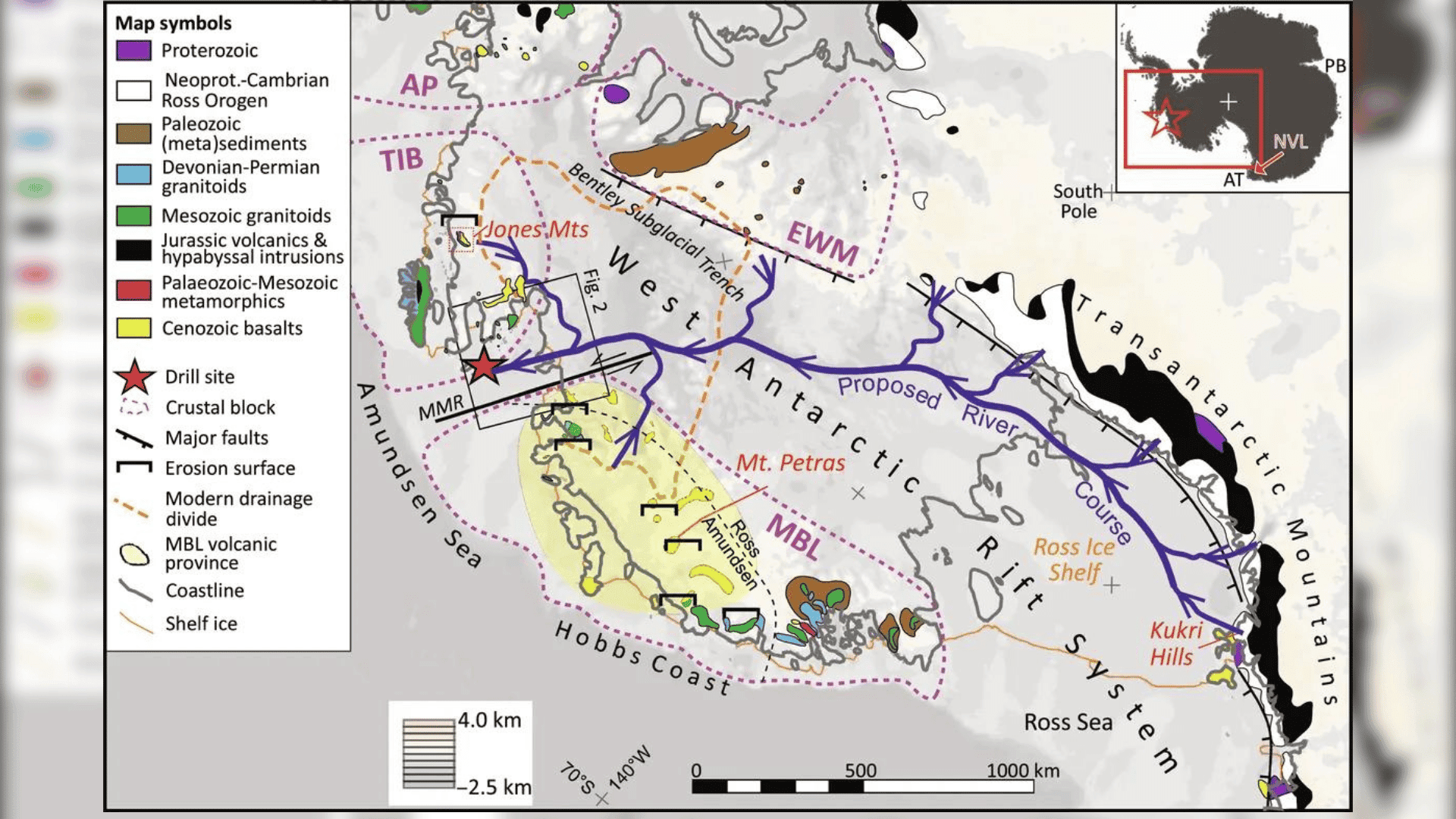Researchers, including Professor Cornelia Spiegel of the University of Bremen and colleagues, drilled into ice around the coast of Antarctica to uncover evidence of an ancient river system.

Approximately 44-34 million years ago, during the mid-late Eocene epoch, large parts of Antarctica were ice-free, which created room for river systems that have long since frozen. Sediments from the Amundsen Sea moved from the continent’s mountain range, revealing there was no inland sea in between to hold them.
Before the formation of the Antarctic Circumpolar Current blocked their path, ocean currents drew warm water down from the equator. Consequently, the forests thrived while the highlands were glaciated and the lowlands got snowy in winter.
Forests need rain, and regular rain would mean rivers, but identifying where they would have been is challenging as the landscape has changed drastically since the ice came.
In the Amundsen Sea, the team discovered 56-79 feet of sediments composed of minerals that do not match those of nearby West Antarctica. The minerals, instead, came from the Transancarctic Mountains that divide East and West Antarctica.

Explore Tomorrow's World from your inbox
Get the latest science, technology, and sustainability content delivered to your inbox.
I understand that by providing my email address, I agree to receive emails from Tomorrow's World Today. I understand that I may opt out of receiving such communications at any time.
These mountains span across the continent, crossing right angles to a line from the South Pole to the Amundsen Sea. For the minerals to have reached the Amundsen Sea, they would have had to travel 932 miles long.
Though this length isn’t exceptional, the Transantarctic debris would’ve been deposited into a swampy river delta, with the authors choosing the Rhine and the Rio Grande (the US/Mexico one) as modern counterparts. Mountain ranges produce rivers and/or glaciers to carry precipitation away, but this would have involved a much shorter trip to the sea.
“The existence of such a transcontinental river system shows that – unlike today – large parts of West Antarctica must have been located above sea level as extensive, flat coastal plains,” Spiegel said.
The study’s authors concluded that a series of events, including sediment depositing in the Amundsen Sea, seafloor spreading, rift-related magmatism, and the rise of the Transantarctic Mountains, all started around the same time 40 million years ago.







